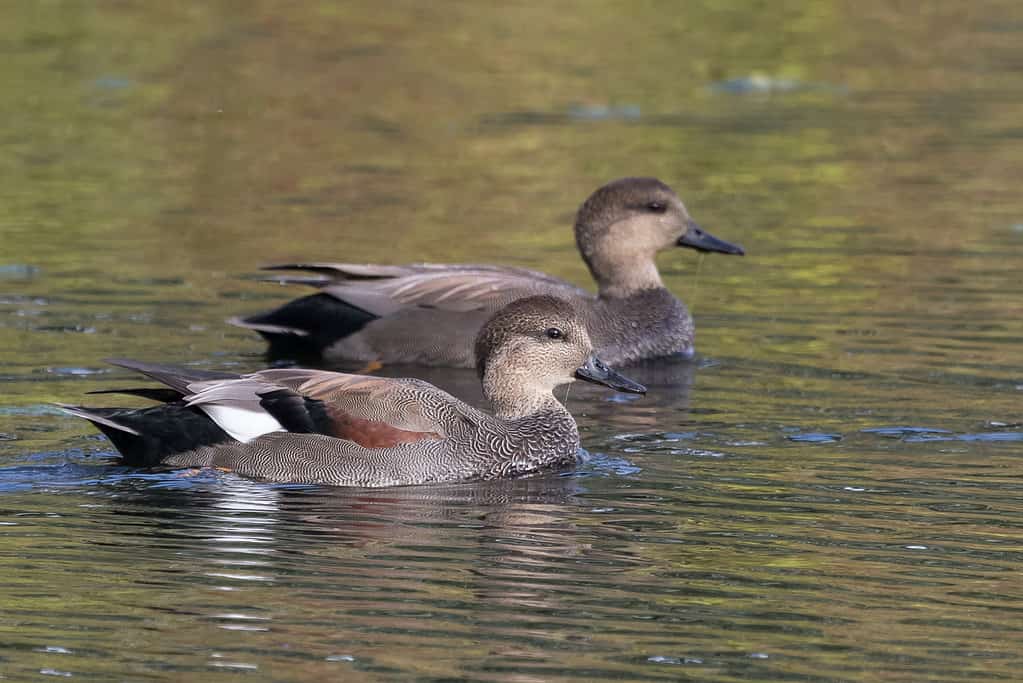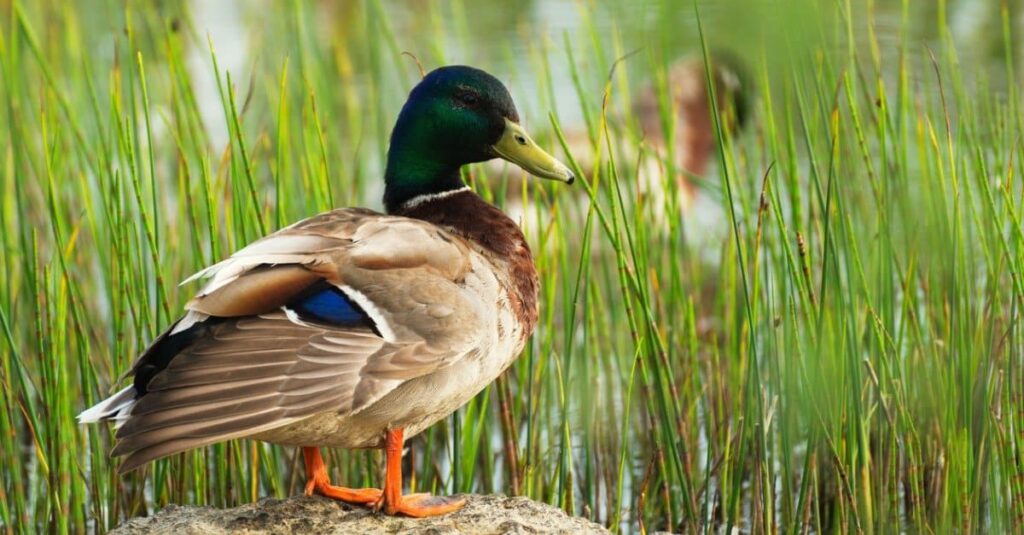Ducks and mallards belong to the same biological family, Anatidae. Although they share many similar traits, mallards are migratory birds, and ducks are generally non-migratory. Both are attracted to parks, wetlands, ponds, or any body of water with aquatic vegetation.
Ducks and mallards can commonly be found in North America, Eurasia, and North Africa. In the United States, ducks and mallards are most active in Washington, Oregon, California, North Dakota, Montana, Missouri, and Arkansas. Depending on the species, ducks are usually a shade of brown, which helps them blend in and avoid predators. Mallards, however, have a green head and yellow bill.
In the annual cycle of waterfowl, the nesting period is the most important time for their populations. Ducks will nest almost anywhere, such as small islands, bushes, and sometimes backyards. Mallards choose to nest on dry ground, near water but also in a place that is sheltered among vegetation. Here are some common places where ducks and mallards nest.
Ducks

Nesting sites for ducks will be near water.
©Hayley Crews/Shutterstock.com
Ducks will usually have one partner at a time for breeding. The bond lasts about a year, and some larger species of ducks might bond for several years. Waterfowl fall into three categories for nesting: upland nesting, overwater nesting, and cavity nesting.
Once a hen chooses a nesting site, she will create a nest bowl. For upland nesters, the hen will create a shallow depression in the ground. Cavity nesters will find recessed locations, such as a hole in a decaying tree. Overwater nesters will make their nests in bulrushes, flooded cattails, or willows.
Once the eggs are laid, the incubation process begins. This period lasts from 21 to 31 days. Female ducks will typically take about three nesting breaks a day. As she builds the nest, the duck will add feathers from her belly as well as small bits of vegetation. She will also shift the eggs around in the nest to ensure the body heat is evenly distributed. After the eggs hatch, the ducklings will become independent within two months.
Mallards

Mallards will nest in places with dense vegetation for protection.
©iStock.com/M-Production
In spring or summer, female mallards will construct their nests. The mallard pair will choose a site that is on the ground and found under dense, low vegetation. They will build near water and abundant food sources. Typical nesting places include: agricultural fields, under logs, in woodpiles or shrubs in gardens, in hollow trees, and places with low vegetation.
Mallards will lay their eggs sometime between March and July. The incubation for a mallard’s eggs will take about 28 days. The female will line the next with feathers plucked from her undercoat and with some plant material. The nest is the size of a large dinner plate. Once the eggs have hatched, the mother will care for the brood for another 50 to 60 days until the ducklings become independent. Mallards have a high mortality rate (80%) in the first couple of weeks of life. On average, only 30% will make it to the fall.
Nesting Success
In nature, more than a few factors can affect nesting success. Weather, such as flooding or rising water levels, can destroy the nest. Other weather problems, such as hail, ice storms or heavy rain, can make it difficult for the female to regulate the temperature of the eggs during incubation. Because mallards are an early-nesting species, they have a greater risk to be affected by weather.
Natural predators can also cause nest losses. Owls, hawks, ravens, and crows are among the greatest avian predators. Skunks, red foxes, opossums, and even domestic dogs and cats are common nest predators. They can be a primary cause of waterfowl nest losses.
However, the most serious threat to nesting success is habitat loss. In the United States, half of its original wetlands have disappeared due to rising sea levels, the effect of heat-trapping pollution. Grasslands are shrinking at an alarming rate; 2.6 million acres of grassland were lost in the Great Plains in 2019 alone. This loss of habitat presents the most serious challenge to nesting waterfowl. Among several initiatives, farm bill conservation programs provide incentives to restore wetlands and grasslands.
Ducks and mallards are a common sight in parks, around lakes and ponds, and in wetland areas. Ducks and mallards inhabit a wide range of habitats, are adaptable, and can sometimes live in urban areas. Despite a loss a habitat, their population continues to increase. These waterfowl creatures love the water and can be found all over the world, except in Antarctica, where the climate is too cold.
Thank you for reading! Have some feedback for us? Contact the AZ Animals editorial team.








